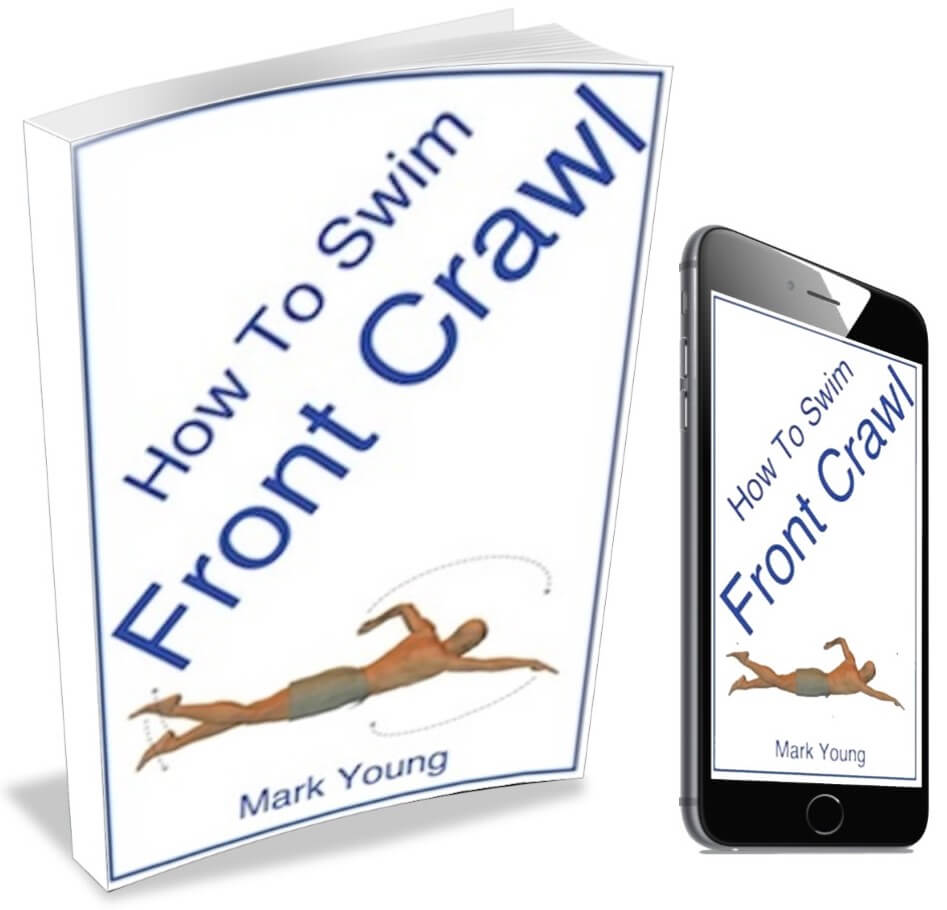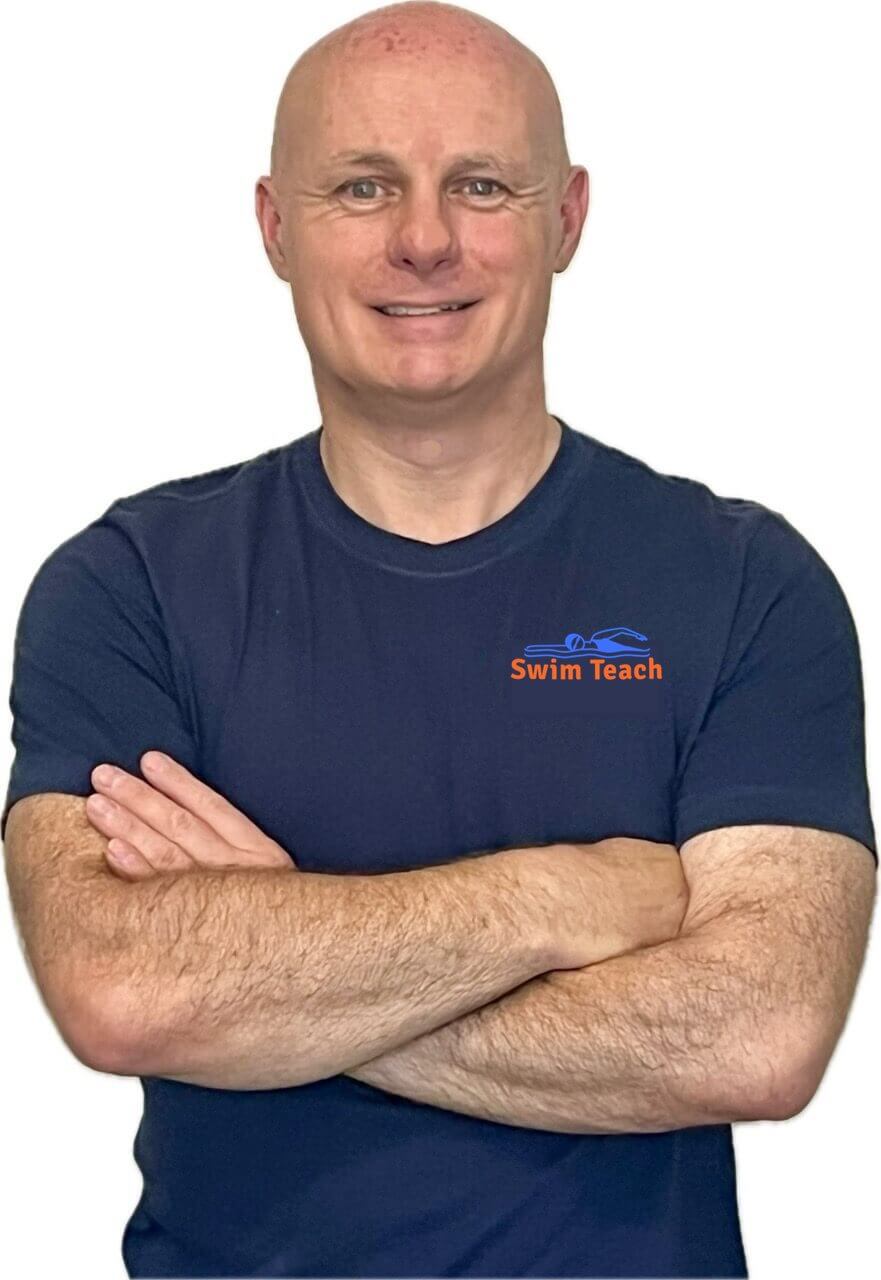- Swim Teach Home
- front crawl
- Front Crawl Breathing
- Breathless and Exhausted After Swimming 50 Metres
Breathless and Exhausted After Swimming 50 Metres
I am 68 years old and not very athletic. When I swim 50 metres, I am very slow; when I get to the end, I am breathless and exhausted. I have been taught two-sided breathing and proper technique. How can I improve? I'm embarrassed about my Swim Club.
I presume you are referring to your front crawl, as you mentioned two-sided breathing. Becoming exhausted during a front crawl is very common and not something that should cause embarrassment or put you off your swimming. After all, you are doing something that loads of adults wish they could do!
Three areas to focus on that might help to get more out of your front crawl:
1. Refine your technique to help become more efficient
2. Breathing technique: when, how and how often.
3. Work to improve your stamina.
1. Fine-tune Technique for Maximum Efficiency
Sometimes it's the small things that make a difference to our swimming technique, despite how much we have previously learnt. Small things like making sure our hands enter the water in-between shoulder line and head, keeping our feet together during kicking and not allowing our head to raise when we swim.
These small aspects of technique all add up to make us more efficient through the water, resulting in us swimming longer distances with less effort - in theory.
2. How and When To Breathe
Make sure you are breathing out as you swim and not holding your breath. It is common for swimmers to hold their breath without knowing they are doing so. Breathing to the side is something you have been taught, but how often your breath will change as you cover more distance through the pool. You say you have been taught two-sided breathing, but that does not have to be set in stone.
As you become more tired and out of breath, it will be easier to breathe to the same side every stroke cycle. Watch any long-distance front crawl swimmer, a triathlete, for example. They will breathe every stroke cycle to the same side to maintain their pace over the distance they need to swim.
3. Increased Stamina Makes All The Difference
Your stamina or fitness level will ultimately determine how far you can swim before you become exhausted. You say to yourself that you are not very athletic, but that doesn’t mean you can’t work on it and improve it. Stamina plays a big part in front crawl because it is physically demanding.
Are you able to swim breaststroke or swim on your back? If so, swim your 50 meters of front crawl and then swim one or two lengths of something less tiring such as breaststroke or on your back, to recover. Then swim another 25 meters front crawl, recover again, and so on. Over time (weeks or months, depending on how often you swim), your stamina will improve, and you can increase the amount of front crawl you can swim before you become exhausted.
HOW TO SWIM FRONT CRAWL EBOOK: everything you need to master front crawl swimming stroke. 22 easy drills that focus on each part of front crawl technique. From body position to breathing and timing. Decades of teaching experience all packaged into 1 easy file. Download to your device and master front crawl TODAY! (click here for an INSTANT preview).
Don't miss out! Click here for more details on how to get your copy.
Not Able To Inhale
I am not able to inhale as I swim. I am able to exhale in the water, but as soon as I tilt my head to inhale, water flows into my mouth, and I feel like choking! Also, I forget about moving my legs when I try to inhale!
It is quite probable that you are not turning your head enough for your mouth to clear the water surface, and your attempts to inhale result in water flowing into your mouth.
Go right back to basics and practice breathing while standing in the water. Stand in the water of about chest or shoulder depth, take in a breath and exhale into the water. Then turn your head to the side and inhale again. Practice this for a few minutes or until your get used to the feeling of water around your face and mouth but can inhale without water entering your mouth.
This all sounds very basic and easy, but believe me, if inhaling and exhaling throughout this exercise becomes second nature, then performing it whilst swimming will be a whole lot easier.
Your body position is very different in the water when swimming compared to when it is standing, which means that your head position will also be different. If you have practised the previous exercise, then you are halfway there.
Swim slowly concentrating on your breathing, ensuring that your mouth clears the water when you inhale. If you are still finding water entering your mouth, then try over-exaggerating your head movement. In other words, turn your head far more than you need to. Firstly this will ensure that your mouth clears the water surface and will, over time, help you to find a comfortable amount to move your head and, therefore, a comfortable position to inhale.
As for your legs stopping when you breath, this is also a very common mistake to be made. It is all down to your coordination or maybe lack of it!
Try kicking whilst holding either a kickboard or the poolside. This will isolate your leg and allow you to focus on kicking as you inhale and exhale.
My ebook The Complete Beginners Guide To Swimming contains all the help and support you need, from relaxing, floating and breathing to all the technique tips for learning to swim the four basic strokes. Click here for an instant preview or click the link below for more information.
The Complete Beginners Guide To Swimming
Professional guidance and support to help you through every stage of learning how to swim.
Discover everything you need from first entering the pool and building confidence to floating and breathing. Plus, 82 exercises to master the four basic swimming strokes.(click here for an instant preview)
Don't miss out! Click here to get your copy of my book!
Front Crawl Breathing Technique
My daughter's front crawl breathing technique needs some help. She must pass a lifeguard test to keep her job as a supervisor at a fitness centre. While she can swim, she has never been able to breathe correctly while her face is in the water (breathing to the side). She must test in the next few weeks and is frustrated that she can't master this technique. I am purchasing your book "front crawl" tonight when I get home, but if you need any additional info for the breathing problem, please advise.
There are two types of breathing techniques for front crawl; either is correct. However, one technique is usually easiest and is, therefore, the most preferred.
Explosive breathing involves holding your breath as you swim and then breathing out and then in again in the short second that the head is turned. Holding the breath whilst swimming can be difficult and tiresome, which is why this technique is not always taught or encouraged. However, some swimmers do find it beneficial.
Trickle breathing is the technique used that most swimmers find the most comfortable. This involves breathing out into the water during strokes and means that the swimmer only needs to breathe in when the head is turned and therefore has enough time to get the required amount of air in the lungs.
The breath out should be slow and steady and not forced to encourage a relaxed breathing technique. This will, of course, change over time and distance as the swimmer becomes tired and fatigue sets in, when breathing will become more forceful and more frequent.
Then there is the question of when to breathe and how often. This is usually determined by the distance to swim. Short-distance sprint swimmers breathe as little as possible whereas long distance front crawl swimmers will breathe every stroke to maintain a steady, even pace.
A good starting point for your daughter is to breathe every three strokes (arm pulls), which means she will alternate the side she breathes on. How long she can maintain this breathing pattern will depend largely on her fitness level, when she becomes tired, switch to breathing every stroke, breathing to the same side with each arm pull.
The head should be rolled to the side and not lifted and turned. Ensure that one ear remains in the water as the opposite ear faces upwards. A good teaching point is to get her to look at her shoulder as she turns her head to breathe. This will ensure she is turning her head and not lifting it.
One of the most common mistakes made with front crawl is to swim too fast too soon, and this would be easy for your daughter to do as part of a lifeguard test, especially if it is a swim against the clock.
The key is to relax into the stroke and take your time. An efficient and smooth front crawl comes from having a streamlined body position and steady even, paced arm action. These parts in turn then make the breathing easier to sustain, but practice makes perfect and like any form of exercise swimming becomes easier with some training.
So encourage your daughter to relax into the swimming stroke, take her time, feel her way through the water and don’t fight it.
My ebook How To Swim Front Crawl contains over 20 separate swimming exercises to help all parts of freestyle, including breathing. You can download it, print out the parts you need and take them to your pool to try out. Click the link below for more information.
The Simple Front Crawl Book
I am a member of the Amazon Associates Program and I will earn a commission from qualifying purchases at no extra cost to you.





